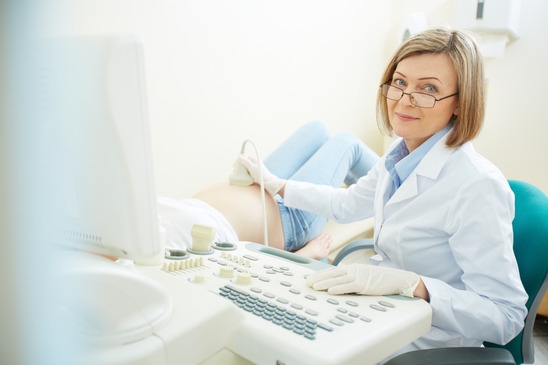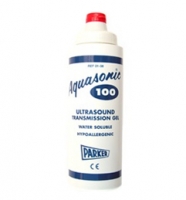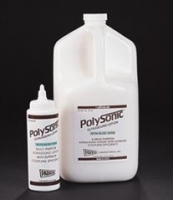Ultrasound-based diagnostic imaging or ultrasonography uses high-frequency sound waves to visualize soft tissues such as muscles and internal organs. Obstetric sonography is the practice of examining pregnant women using ultrasound and is widely used. Sonograms or ultrasound images are made by sending a pulse of an ultrasound into tissue using an ultrasound transducer or probe. As the sound reflects off various parts of body structures the echo is recorded by the computer and displayed as an image on the monitor for the operator.
Ultrasound Technology
Ultrasound technology is used to create various types of images. Perhaps the most common type of ultrasound image, is the B-mode image or the 2-D cross-section of the tissue being imaged. Creating an image from a sound wave requires three steps, producing the sound wave, receiving the echoes, and forming the image. While producing the sound wave, it is important that the transducer is able to efficiently transmit the sound waves into the body to produce a accurate image. The transducer or hand-held probe, frequently has a soft, pliable, rubber coating that is used to guide the instrument across the area of interest, the skin will then be coated with an aqueous gel to effectively transmit the range of ultrasound frequencies being used (typically between 2 to 18 megahertz).
Ultrasound GelAt the beginning of an ultrasound exam or procedure, an ultrasound gel is placed on the patient’s skin. Ultrasound gel or a coupling agent, utilizes a basic physics principle where sound waves tend to carry very well through an aqueous or watery medium. When applied to the surface of the patient’s skin, the ultrasound gel acts as a coupling medium and enhances the transmission of ultrasonic sound waves from the skins surface to the head of the ultrasound transducer. Ultrasound gel serves as a lubricant and improves the acoustic transmission of sound waves to the create the image for the sonographer to examine on the monitor. Listed in the table below are a sampling of the different types of ultrasound gels and lotions available and their main product features.
| Ultrasound Gel & Ultrasound Lotion | ||||
|---|---|---|---|---|
| Product Name | Application | Viscosity | Clear | Available Sizes |
| Aquasonic 100 | Diagnostic & Therapeutic | High-Viscosity | No | 20g Foil Pouch, 8.5 ounce bottle, 1 Liter bottle, 5 Liter SONICPAC |
| Sterile Aquasonic 100 | Sterile Applications | High-Viscosity | No | 20g Foil Pouch |
| Aquasonic Clear | Diagnostic & Therapeutic | High-Viscosity | Yes | 8.5 ounce, 1 Liter bottle, 5Liter SONICPAC |
| SCAN Ultrasound Gel | When a less viscous gel desired | Unique Dual-Viscosity | No | 8 ounce, 1 US Gallon |
Therapeutic Ultrasound
Ultrasounds can also be used for therapeutic treatment, which refers to any ultrasonic procedure that uses ultrasounds for a therapeutic benefit. A therapeutic ultrasound is a technique that uses sound waves to stimulate tissue under the skin’s surface. These ultrasound techniques can include physical therapy, pain management and a variety of other treatments used in rehabilitation centers. Depending on the type of treatment, the ultrasound stimulates the patient’s subcutaneous tissue using high-frequency sound waves. Therapeutic ultrasounds can create heating effects, increase tissue relaxation, increase blood flow to reduce swelling and inflammation and breakdown scar tissue. Therapeutic ultrasound treatments include a variety of pain management therapies such as chronic pain, muscle strain, muscle tension, tendon injuries, and many more.
Ultrasound LotionAt the beginning of a therapeutic ultrasound treatment, ultrasound lotion is applied to the area of the patient’s body that is being treated. The probe from the ultrasound machine will then circulate the ultrasound lotion against the area of the patient. Similar to how ultrasound gel in diagnostic imaging is important, ultrasound lotion for therapeutic ultrasound treatments is equally as important. Ultrasound lotion is easily absorbed by the skin while ultrasound gel has is water soluble and is removed after the exam or procedure. Ultrasound lotion is often preferred by medical staff and patients for therapeutic ultrasound treatments due to the rich, moisturizing formula. The ultrasound lotion is acoustically correct for a broad range of frequency transducers and is hypoallergenic and bacteriostatic.



Leave a Reply